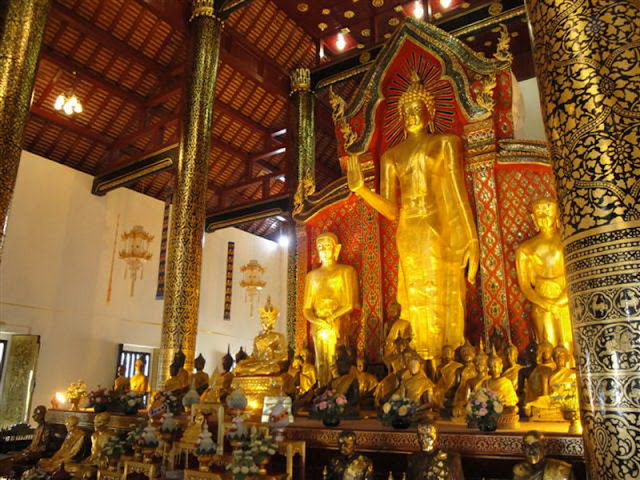The Great Stupa Temple : A Journey Through Wat Chedi Luang
Exploring the Cultural Significance of Wat Chedi Luang
Wat Chedi Luang, also known as the Temple of the Large Stupa, is a historical Buddhist temple located in the heart of Chiang Mai, Thailand. Despite not being as grand as Wat Phra Singh, its towering, ruined Lanna-style chedi is much taller and the sprawling compound around the stupa is powerful in atmosphere.
The
chedi at Wat Chedi Luang was built in 1441 and was once the largest structure
in ancient Chiang Mai. The top of the chedi was destroyed either by a
16th-century earthquake or by cannon fire during the recapture of Chiang Mai
from the Burmese in 1775. A restoration project by UNESCO and the Japanese
government in the 1990s stabilized the monument and prevented further
degradation. Visitors can easily spot the restoration work on the four naga
stairways in each of the cardinal directions. The base of the stupa has five
elephant sculptures on the southern face, including an original brick and
stucco elephant on the far right.
Other
Features of the Temple
In
the main wí·hăhn (sanctuary), there is a revered standing Buddha statue known
as Phra Chao Attarot, along with two disciples. There are also several chapels
and statues in teak pavilions at the rear of the compound, including a huge
reclining Buddha and a beautifully adorned seated Buddha. In addition, the
temple holds a daily Monk Chat under a tree in the grounds, which always draws
a crowd of interested travelers.
The
Làk Meuang
The
Làk Meuang, also known as the City Pillar, is a significant cultural and
religious symbol in Chiang Mai, Thailand. It is housed in a small building
located within the Wat Chedi Luang temple compound. The pillar was first built
in 1296 and was moved from Wat Inthakin to Wat Chedi Luang in 1800. According
to legend, the Sao Inthakin (Pillar of Lord Indra) was brought down to earth by
spirits to protect the residents of Chiang Mai.
The
Làk Meuang is a highly revered object and is considered to be a symbol of the
city's spiritual and physical power. It is believed to bring good luck and
prosperity to the city and its residents. The pillar is surrounded by three
huge Dipterocarp trees, which are said to help protect the city. Legend
suggests that if the trees ever fall, a catastrophe will befall Chiang Mai.
Visitors
to Chedi Luang temple can view the Làk Meuang and pay their respects to this
important cultural and religious symbol. The temple and the surrounding area
offer a unique glimpse into the rich cultural heritage of Chiang Mai and
Northern Thailand. For those who would like to learn more about the history and
significance of the Làk Meuang, we offer private tours of Wat Chedi Luang with
knowledgeable guides who can provide in-depth information and insights into
this fascinating cultural and religious artifact.
How
to Visit Wat Chedi Luang
As a
tour agency based in Chiang Mai, we can provide private tours to Wat ChediLuang with knowledgeable guides. Our staff will assist you in selecting
destinations, accommodation, and activities that best suit your needs.
Experience the rich history and cultural significance of Chedi Luang temple and
immerse yourself in the past Lanna culture that prospered before coming to
Thailand. Join us for an in-depth travel experience.






No comments:
Post a Comment